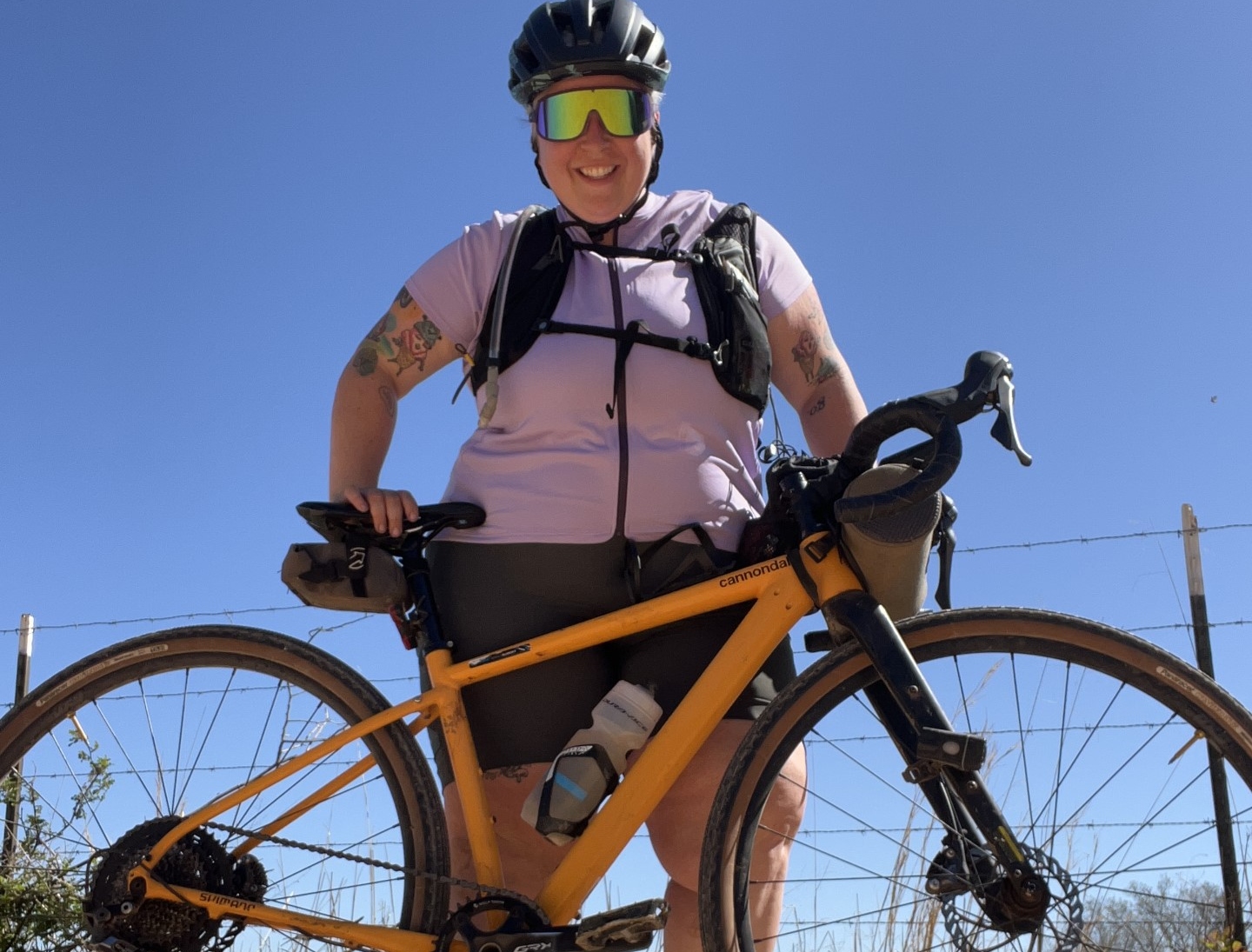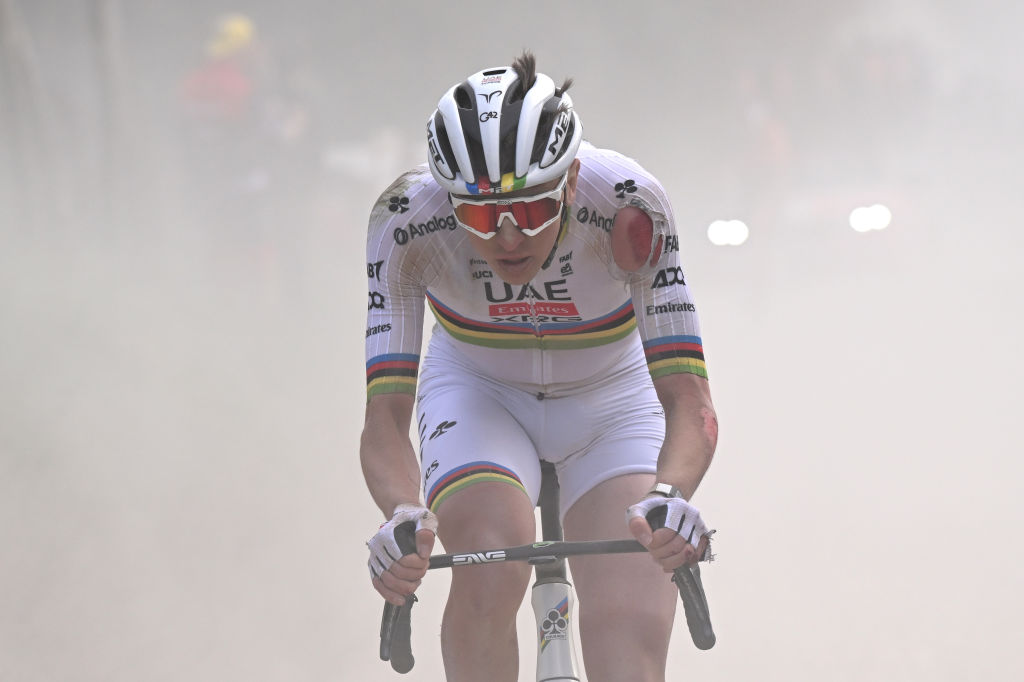The benefits and freedoms of riding slow: what slower cycling can offer the mind and body
How slow rides build strength, endurance and a deeper connection to your ride


My last race of the season wrapped up a few weeks ago, marking the arrival of chilly air, earlier sunsets, and wet roads. For many of us, the changing of the season also changes our riding habits - winter being a time for base miles and building a strong foundation for next year. As I ease into these rides, I’m reminded of how much I love the simplicity of a long, slow ride. No worrying about intervals or pacing—just riding for the sake of being out there. While my pace during these rides is markedly slower this time of year, I’ve found a host of benefits and real freedom in riding slowly.
The most obvious benefit is that by slowing down your pace, you’ll be able to ride longer. As the self-proclaimed queen of slow, endurance riding, I can attest to this fact in my personal riding. With multiple DFL (Dead F’ing Last) titles to my name, including at MidSouth Gravel 100 and Unbound Gravel 100, I know that I can ride forever at a 10 mph pace. During training rides or group rides where I bump up the intensity and ride faster, I tire out much more quickly. I’ve found myself more tired after a 30-mile fast ride than a 100-mile moderate-paced ride.
This is not just anecdotal—scientific research supports it. While intense exercise improves fitness faster, consistent low-intensity cycling gradually builds aerobic capacity and muscular endurance. Research in The Journal of Applied Physiology suggests that low-intensity, long-duration exercise has a favourable effect on mitochondrial density and cardiovascular endurance. In other words, cycling at a slower pace over longer periods helps your body become more efficient at using energy and strengthens your heart and muscles over time.
Slow cycling is also easier on the joints than high-intensity cycling, making it an ideal exercise for people with joint issues or arthritis. Research published in Arthritis Care & Research highlighted that low-impact exercise like cycling helps maintain joint function and reduces pain. As someone with a history of two knee surgeries, I can attest to this also—my knees feel much better after a slow to moderate ride than after a fast effort.
There’s also emerging research that consistently training at a slower pace can actually increase your ability to ride faster on race day (just ask Tadej Pogacr about his Zone 2 training!). As explained in a recent Strava article, riding slowly trains your slow-twitch muscle fibres. These muscle fibres are our primary engine for endurance sports, and fat is used as an energy source. Slow rides improve our ability to use fat as an energy source, delaying the need to use carbohydrates as energy, which is more limited. This leaves the carbohydrate fuel for when you really need it—climbing hills, sprints, or charging ahead during the big race.
Aside from the physical benefits to your body from riding slowly, there are innumerable additional benefits or freedoms too often overlooked—the freedom to be present for one. Think about the last great mid-ride conversation you had. Odds are you were likely riding at a relaxed enough pace to form full sentences, listen to what your riding partner was saying, and respond thoughtfully. Trying to do that during a full-out effort. It’s not nearly as fun.
Another huge benefit to riding slowly is actually being able to take in the scenery you’re riding through. Going slow allows you the freedom to literally look around without worrying about the wheel in front of you. Potholes come at you a lot slower at 10 mph than 20 mph, so as long as you stay alert and don’t get too distracted, you can still ride safely while enjoying the scenery.
Get The Leadout Newsletter
The latest race content, interviews, features, reviews and expert buying guides, direct to your inbox!
I realise that riding slowly is a huge challenge for many folks, especially as many of us seek to continually improve (and speed is often the gauge we use to determine improvement.) Whether you’re chasing a QOM or trying to keep up with the local shop ride, there’s a definite thrill to riding fast. I’d encourage you, however, to mix it up a bit. While not every ride needs to be slow, try varying your pace on your next ride and see how you feel afterwards. I’m willing to bet you’ll still finish the ride with a smile on your face and feeling good.
So I encourage you to slow down. Enjoy the base mile season and wintery rides ahead by scaling it back and notch, and who knows, you may be stronger when next season rolls around.

Thank you for reading 20 articles this month* Join now for unlimited access
Enjoy your first month for just £1 / $1 / €1
*Read 5 free articles per month without a subscription

Join now for unlimited access
Try first month for just £1 / $1 / €1

Marley Blonsky is a fat adventure cyclist, co-founder of All Bodies on Bikes, co-host of the All Bodies on Bikes podcast, curve model, advocate, and consultant. Marley is fiercely passionate about size inclusion, believing that everyone deserves full access to life - including at work, in sport, and at home.
-
 Tadej Pogačar's MET Trenta 3K Carbon is one of the best road cycling helmets on the market – grab it now with 26% off at Tredz
Tadej Pogačar's MET Trenta 3K Carbon is one of the best road cycling helmets on the market – grab it now with 26% off at TredzDeals The MET Trenta features enhanced safety and performance tech including MIPS AIR and now with a whopping £80 reduction, it's a bargain buy
By Paul Brett
-
 Tadej Pogačar has shown he's fallible - and that's a good thing
Tadej Pogačar has shown he's fallible - and that's a good thingThe Slovenian won’t enjoy losing, but it’s better for brand Pog that he sometimes does
By Adam Becket
-
 How I got my non-cyclist friend hooked on riding bikes — and how you can, too
How I got my non-cyclist friend hooked on riding bikes — and how you can, tooWith a little bit of gentle guidance, “bikes aren’t my thing” can turn into “when’s our next ride?”
By Marley Blonsky
-
 I’m a bike influencer - here’s how I earn a living
I’m a bike influencer - here’s how I earn a livingAs an influencer, I’m not paid for race results or performance; my value instead comes from the communities I’m building.
By Marley Blonsky
-
 I don’t drink alcohol - Is there room for non-drinkers in cycling culture?
I don’t drink alcohol - Is there room for non-drinkers in cycling culture?Rethinking cycling’s drinking culture to focus on connection, inclusivity and post-ride joy for everyone
By Marley Blonsky
-
 The first time I was overtaken by an e-bike I was jealous and frustrated, now I recognise they belong, even in racing
The first time I was overtaken by an e-bike I was jealous and frustrated, now I recognise they belong, even in racingE-bikes aren’t cheating; they are the future of cycling, says Marley Blonsky
By Marley Blonsky
-
 Not all cycling heroes wear yellow jerseys: meet my trailblazing cycling icons
Not all cycling heroes wear yellow jerseys: meet my trailblazing cycling iconsFar away from the WorldTour, these riders are reshaping the world of cycling through advocacy, inclusion and community.
By Marley Blonsky
-
 Cycling has a weight problem: a call for the industry to be more transparent about its weight limits
Cycling has a weight problem: a call for the industry to be more transparent about its weight limitsThe weight problem I’m referring to lies in cycling equipment itself —specifically, the low weight limits and the lack of accessible information on the weight capacity of products.
By Marley Blonsky
-
 Lip service isn't good enough: here's what needs to change for cycling events to actually be inclusive
Lip service isn't good enough: here's what needs to change for cycling events to actually be inclusiveThese are the key actions that make an event actually inclusive and do more than just lip service.
By Marley Blonsky
-
 I’m a fat cyclist; these are the top 3 misconceptions people have about bigger riders and why they’re wrong
I’m a fat cyclist; these are the top 3 misconceptions people have about bigger riders and why they’re wrongAfter my recent 'We're fat cyclists' reel went viral, I realized I had hit a nerve
By Marley Blonsky